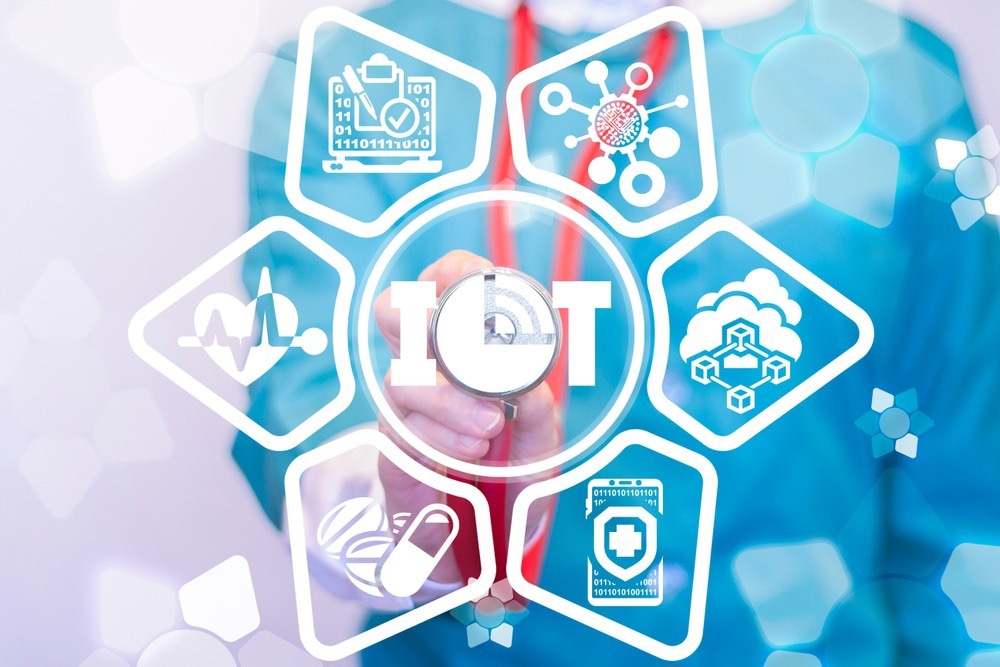Introduction
Examples of Clinical Real-Time Data Mining
AI Learning in Healthcare
The role of The Internet of Things (IoT) in Real-Time Data Acquisition
References
Health professionals have been allocating a lot of funds into electronic record-keeping, paying for server data, computing power, etc. While this method does work, it becomes difficult to extract relevant information if the data itself is old or if there is too much of it to comb through.
As a result of the COVID-19 pandemic, increased rates of heart disease, and other afflictions, hospitals aim to change healthcare delivery, increase patient autonomy, and devote fewer funds to healthcare as a percentage of the economy. This can all be accomplished through real-time data acquisition and AI machine learning. In clinical business intelligence, an emerging field within the STEM sectors, professionals focus on accruing information at the point of care, where it is applicable, relevant, and easy to access.

Image Credit: Buyakshina/Shutterstock.com
Examples of Clinical Real-Time Data Mining
Salam health, located in Oregon, has taken the initiative in clinical business intelligence, gathering real-time data on the rates of clostridium difficile, a hospital-acquired infection in the gut. Remarking on the death toll of 200,000 patients yearly, doctors began using information systems to assess how infections performed in real-time. This differs from the typical 60-90 retrospective approach. After some monitoring of staff infections was conducted, it was found that this real-time data tracking proved to be essential for combating C. difficile, correlating to a direct reduction in HO-CDI rates.
A paper produced by Ziemssen, T. et al. demonstrated a strategy to tackle multiple sclerosis using real-time data mining. A software/ machine was built to generate a classification model founded upon the signs and symptoms associated with multiple sclerosis. It will classify and prejudge the severity and progressive nature of several symptoms, such as paresis, diplopia, numbness, and more, and create an algorithm to diagnose.
After combing through the electronic health records and generating this model, the P-score was low enough, and a positive predictive value rate was attained. This study uses other afflictions and shows the grander audience just how vital a role AI can take in monitoring human health.
AI Learning in Healthcare
AI and machine learning have been in use for the past decade and, since then, have acted as our primary modus for attaining trending data in health care facilities. It is important to note that this approach is not only applicable to the monitoring of disease and infection.
Real-time data collection has been used in managing hospital beds, surgical day care units (procedural suites for extended periods of recovery), the supply and demand of bays, forecasting the most likely day of discharge for a given patient, and more.
Rule-based expert systems, founded upon an assortment of "if-then" rules, are helpful in the acquisition of real-time data. This rule-based system is often integrated with the hospital's electronic health records (EHRs). This further lead to "clinical decision making" on the part of the machine, to be interpreted by the leading physician. Though AI is proficient with data mining, tracking, and establishing patterns using a heavy mass of data, human experts and engineers are still required to maintain these machines. Moreover, many of the moral and ethical decisions that physicians face cannot be tackled by these binary systems.

Image Credit: Panchenko Vladimir/Shutterstock.com
The role of The Internet of Things (IoT) in Real-Time Data Acquisition
The internet of things (IoT) is a digital platform that encompasses all smart devices and uses their sensors to gather information about the world around us. This approach expands the scope of traditional medicine and uses large data streams to optimize patient health through algorithmic processing and decision-making. This segment of the health industry, sometimes dubbed "The Internet of Medical Things," aims to surpass outdated analog devices such as ultrasound probes and old cumbrous sphygmomanometers and replace these devices with smart pills, robotic surgical instrumentation, and other such devices that possess the ability to transfer data into the cloud.
Patients with smartphones or other smart device brands can now use high-speed broadband wireless to upload intel on whichever disease they are being treated for. The data-assisted analysis founded upon this real-time data acquisition will make an intelligent diagnosis and treatment avenues, culminating in AI machine learning, the internet, and real-time trends as the foundation.
A paper produced by Wang P et al. introduces the process of machine learning through density-based spatial clustering with noise (DBSCAN). This aims to transform data acquisition and improve clustering results. Doctors and nurses use this to collect patient data while the algorithm models trends (rate of disease, equipment usage, etc.), knowing what abnormal points to avoid and what outliers should be deleted to avoid false clusters.
Comparing clustered data with other sources can aid in the decisions of treatment. It was concluded by Wang P et al. that the results of smart diagnosis could provide cleaner facilities and greater insight into hospital management.
This paper emphasizes the importance of adopting real-time data in all hospitals and clinics. Though single intervention at the institution level does show some promise, we will not be aware of its true efficacy until it has been tested and validated in multiple centers. This is the only way to compare and draw conclusions on the relevant data.
Continue Reading: Unlocking the Power of Data to Accelerate Future Health Systems
References:
- Yeng, P. K., Szekeres, A., Yang, B., & Snekkenes, E. A. (2021). Mapping the Psychosocialcultural Aspects of Healthcare Professionals' Information Security Practices: Systematic Mapping Study. JMIR human factors, 8(2), e17604. https://doi.org/10.2196/17604
- Schlicher, J., Metsker, M. T., Shah, H., & Demirkan, H. (2021). From Nasa To Healthcare: Real-Time Data Analytics (Mission Control) Is Reshaping Healthcare Services. Perspectives in health information management, 18(4), 1g.
- Wang, P., & Li, J. (2021). Implementation of Real-Time Medical and Health Data Mining System Based on Machine Learning. Journal of healthcare engineering, 2021, 7011205. https://doi.org/10.1155/2021/7011205
- Almarzouki HZ, Alsulami H, Rizwan A, Basingab MS, Bukhari H, Shabaz M. An Internet of Medical Things-Based Model for Real-Time Monitoring and Averting Stroke Sensors. J Healthc Eng. 2021 Oct 27;2021:1233166. doi: 10.1155/2021/1233166. PMID: 34745488; PMCID: PMC8566034.
- Bohr, A., & Memarzadeh, K. (2020). The rise of artificial intelligence in healthcare applications. Artificial Intelligence in Healthcare, 25–60. https://doi.org/10.1016/B978-0-12-818438-7.00002-2
- Doyen S, Dadario NB. 12 Plagues of AI in Healthcare: A Practical Guide to Current Issues With Using Machine Learning in a Medical Context. Front Digit Health. 2022 May 3;4:765406. doi: 10.3389/fdgth.2022.765406. PMID: 35592460; PMCID: PMC9110785.
Further Reading
- All Healthcare Content
- Healthcare Systems Around the World
- What is the Role of Regulatory Bodies in Healthcare?
- How is the ‘omics’ Revolution Changing Healthcare?
- Primary Healthcare Providers
Last Updated: Jul 12, 2022

Written by
Vasco Medeiros
Obtaining an International Baccalaureate Degree at Oeiras International School, with higher levels in Chemistry, Biology, and Portuguese, Vasco Medeiros has just graduated from the University of Providence College with a Bachelor of Science. Before his work as an undergraduate, he first began his vocational training at the HIKMA Pharmaceuticals PLC plant in Ribeiro Novo. Here he worked as a validation specialist, tasked with monitoring the gauging and pressure equipment of the plant, as well as the inspection of weights and products.
Source: Read Full Article






